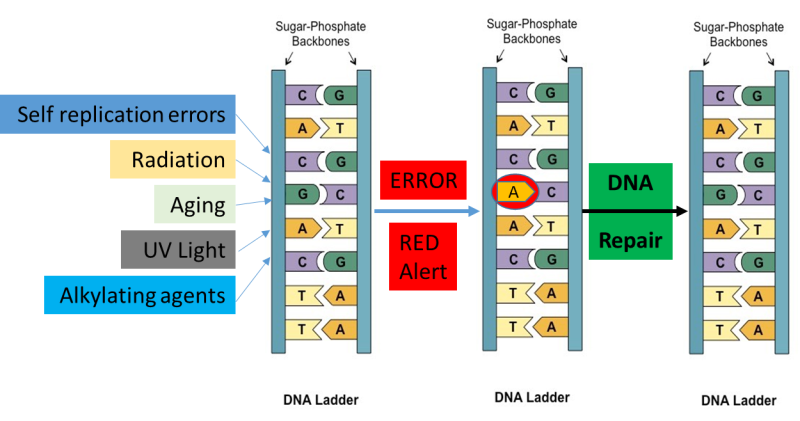
The sunscreen lotion is supposedly a magic wand we are always advised to use when going out to protects us from sunburns. However, do we know why we get sunburns? Do we understand the science of sunburn?
When the harmful Ultraviolet (UV) rays from the Sun enter the skin cells, they can damage our cells' DNA—the genetic material. A consequence of this is a red rash followed by skin peeling—a clear indication of cell death. However, exposure to sunlight always does not cause this adverse reaction! Depending on the intensity and the frequency of the exposure to sunlight, its impact on our skin differs as our cells have mechanisms to repair damaged DNA. As our exposure to sunlight increases, the possibility of restoring the damaged DNA decreases.
UV rays are not the only that damage our DNA; many other harmful chemicals such as alcohol can also do the same. Our cells too contribute to this damage. Since they are continuously producing harmful products (like reactive oxygen species) as a byproduct of their metabolic activities, our cells are under much pressure to copy and decipher the DNA code in a very short span of time. This hurry may cause errors in the DNA code, which act as a source of DNA damage. A damaged DNA indeed leads to cell death.
The bright side of things is that our body also has a mechanism to repair damaged DNA to keep our cells alive. Three scientists—Tomas Lindahl, Paul Modrich, and Aziz Sancar—were awarded the 2015 Nobel prize in Chemistry for their discovery of the mechanisms of DNA repair.
Depending on the type of DNA damage, there are four primary mechanisms of DNA repair that use a unique set of proteins. The first is called the 'mismatch repair pathway' that detects and fixes any misalignment, erroneous insertion or deletion of proteins in our DNA. The second mechanism, called the 'base excision repair', removes any distorted structure in the DNA and replaces it with a right code. The 'nucleotide excision repair', the third one, is the primary pathway that removes DNA damage induced by UV light. Unlike these three pathways which detect single changes in a strand, the 'double-strand break repair pathway' detects and patches up breaks in both the strands.
However, in the case where the repair mechanisms fail and the DNA remains permanently damaged, the cell either dies a programmed death, called apoptosis, or divides in an unregulated manner, which could lead to cancer. Skin and breast cancers are the two most common cancers which result due to the failure of DNA repair.





